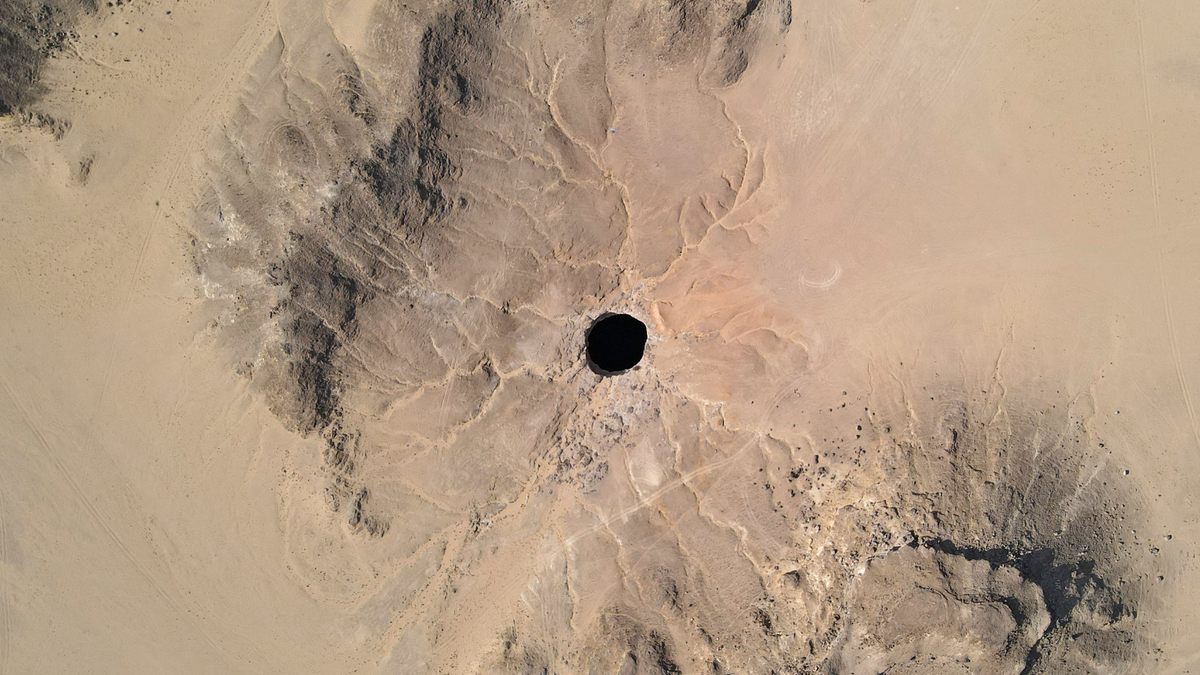The History and Mystery of Yemen’s ‘Well of Hell’
On the far eastern edge of Yemen, far from any cities or well-traveled roads, there’s a black mark in the desert, like a giant eye peering up from the earth. Regardless of how uncanny it looks from above, it is a natural phenomenon, a perfectly round and profoundly deep sinkhole called the Well of Barhout, or the “Well of Hell.” It’s easy to see why. Without the help of wings or long ropes, anything that disappears into this 367-foot-deep hole is not going to come out.
For centuries, sinister legends have swirled around the Well of Barhout. It’s said that visiting or even talking about it can bring bad luck. It’s also said to be a prison for uncontrollable jinn, a range of spirits that haunt Islamic mythology. The jinn, according to legend, will claim the head of anyone brave (or foolish) enough to descend to the bottom. “Yes, [locals] always told us about that,” says geologist and caver Mohammad Al-Kindi, matter-of-factly. “They also mentioned wild animals. They mentioned strange voices or people screaming below. They mentioned also that the air there is really bad. You will not be able to breathe.” But despite all those warnings, Al-Kindi says he didn’t feel any trace of fear before he recently became the first person to descend to the bottom (and come back up). His head remains attached to his body.

On a hot, clear September day, Al-Kindi and six other members of the Omani Caves Exploration Team (OCET) parked their four-wheel drives yards from the cave’s open maw. After an hour and a half of set-up, Al-Kindi, who had twice tried to make the descent before, was the first of five team members to rappel in. The set up was actually “quite easy,” he says, “because it’s just a single drop” and the rope doesn’t touch the rock face at all. “As soon as I went down the first 30 meters [100 feet], I could start seeing the details of the cave, its formations. I would be able to see if it had wild animals, crocodiles specifically,” he adds with a laugh. (One local had suggested he might find them down there.) “It was a very happy moment, just going down, enjoying the scene.” That is, until he reached the end of his rope—50 feet above the cave floor. “Luckily, I had a walkie-talkie with me,” he says, and he called up to ask for a longer rope to be sent down.










0 Comments
If you have any doubts, please let me know.